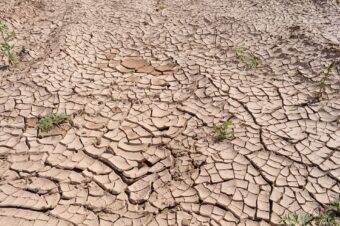
Zimbabwean President Emmerson Mnangagwa has declared a national disaster due to a drought that threatens to put 2.7 million people at risk of starvation this year, according to global media.
Mnangagwa told a press conference that the country needs two billion dollars in humanitarian aid to prevent famine. Zimbabwe’s harvest will be enough to provide just over half of the grain required to feed the nation.
“More than 80 per cent of our country has below average rainfall due to the drought caused by El Niño,“ the president said, stressing that the country’s top priority is to provide food for all the country’s inhabitants because “no one should die of hunger”.
The light rains in the south of the continent are caused by El Niño, a natural climate pattern that has a global impact on the weather. Before Zimbabwe, the Republic of Malawi and Zambia declared a national disaster, too.
In addition to food production, the drought threatened electricity production, as Zimbabwe largely relies on coal and hydroelectric power plants.
More:
- WHAT EL NIÑO HAS IN STORE FOR US THIS YEAR?
- STATE OF EMERGENCY, RESTRICTIONS AND EMPTY TANKS DUE TO DROUGHT
- MELTING OF THE CRYOSPHERE CRYOSPHERE – CHANGES AND CONSEQUENCES
What is El Niño?
During normal weather conditions in the Pacific Ocean, the trade winds blow westward along the equator, carrying warm water from South America toward Asia. El Niño is a climate pattern that violates these normal conditions, causing the trade winds to weaken while warm water is pushed toward the west coast of America, explained the website of the US National Oceanic and Atmospheric Administration (NOAA).
El Niño can have a global impact on weather by causing wildfires, record heat, droughts, and floods worldwide. This climate pattern occurs on average every two to seven years, and its episodes last from 12 months to several years.
El Niño means little boy in Spanish. South American fishermen first noticed periods of unusually warm water in the Pacific Ocean back in the 17th century.



